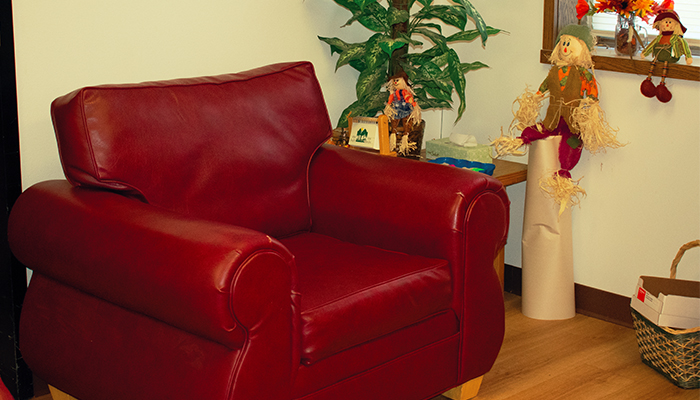By CRISTINA JANNEY
Hays Post
High Plains Mental Health announced last week that it will expand services at the Schwaller Crisis Center to people who are uninsured.
The four-bed center, which is located in Hays, serves as a mental health crisis center for High Plains’ 20-county catchment area.
In the past, the center has provided care to Medicaid and private-pay clients. An increase in state funding allowed High Plains to expand its care to individuals who are homeless and experiencing a mental health crisis. State funding had been cut by almost a third in the last six to eight years, Walter Hill, High Plains executive director, said. Some of that funding has been restored.
The center provides 24/7 care as a voluntary alternative to hospitalization.

Although crisis centers similar Schwaller are opening in metro areas such as Kansas City and Wichita, the Schwaller Center opened in 2002. The center opened after the in-patient hospital unit in Hays closed in the same year.
The center is a half-way point between outpatient treatment and hospitalization.
“There’s a gap between coming in once or twice a week or every couple of weeks versus going to a state hospital where it is locked and people stay overnight and see a psychiatrist,” Hill said.
Since the center opened, it has diverted 6,000 admissions away from Larned State Hospital and allowed people to find support locally. The center has also been used as transition between the hospital and home.
The center provides many of the same services as a hospital, such as access to a psychiatrist and therapy. However, it offers care in a home-like setting. The center has four private bedrooms, a community kitchen and dining room, as well as laundry facilities. The average stay at the center is three to five days.
Individuals receive support to cope with stressful circumstances, strengthen coping skills, improve sleep and manage daily life skills. They make meals with the staff or with the other individuals staying at the center. The staff may help individuals with life skills, such as managing money, and the staff can help connect the individuals with community resources to use when they leave the center.
Some clients are paired with case workers who help them access resources to look for a job, find a place to live or apply for health care.
Hill said individuals who stay at the center do a lot of work on goals on managing their symptoms. They create kits with reminders of how they can better cope with symptoms and stressors.
“It has reminders about those things so they can pull those reminders out about how do I deal with a situation when I am feeling so depressed or so anxious. How do I calm myself down? So it is really teaching self-help skills. It is probably the most important activity,” he said.
Dealing with your time and handling loneliness can be a significant problem for people who suffer from mental illness, and staff help clients with strategies to cope with those issues. Having the center in the community also means clients are closer to friends and family who can come visit during the individual’s stay.
“People still feel like they have a lifeline to pull themselves back into being on their own,” Hill said. “Sometimes going into the hospital increases their feelings of hopelessness and helplessness because they are so far away in a much different environment in a locked environment. This is not a locked environment like it would be at a state hospital.”
The clients receive medication reviews and work with the staff to create plans for transitioning back to independent living.
Sometimes people’s ability to cope gets worn down and having a place where those stresses are reduced is needed, Hill said.
“One of the key issues is [this is] a safe place where we can help them learn to deal with issues in their lives that are kind of coming in on them,” he said.
“Usually mental health issues at that level of severity are a combination of getting things rebalanced and then learning to deal with those things in life once things are stabilized in your nervous system so you are less depressed and you are thinking more clearly and are less anxious,” Hill continued.
High Plains covers 19,000 square miles and a population of about 100,000 people. Sometimes there is a waiting list for the center and people have to go to the hospital instead of using the center. However, Hill said there are no plans to expand the program. At this point, space and funding would be barriers, he said.
The Schwaller Center was named for Julia Schwaller, who was one of the founding members of the High Plains board.
For more information about High Plains and its services, call 1-800-432-0333. If you are having a mental health emergency, call 911.
